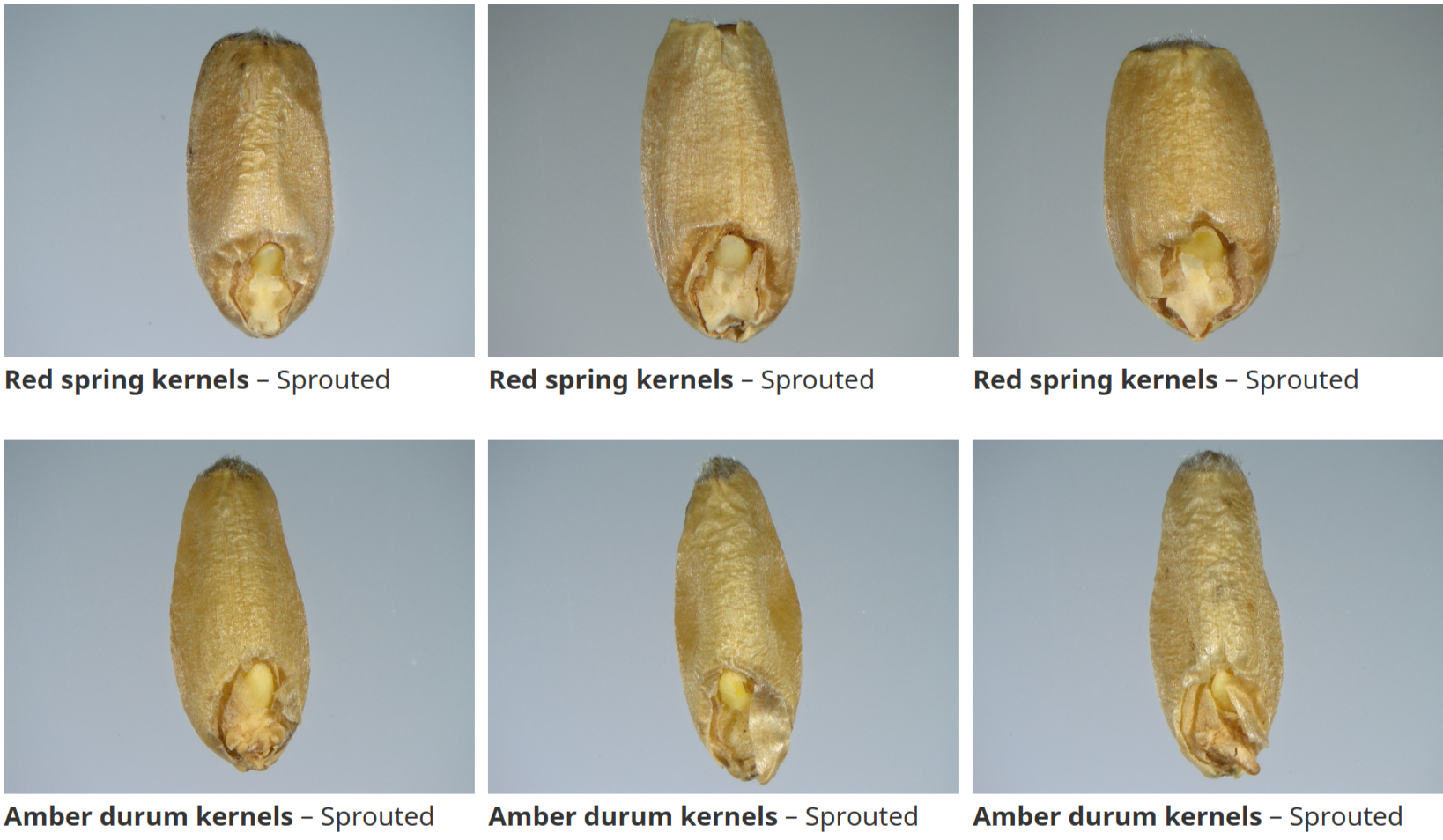Meet the Factor: Sprout Damage in CWRS
Harvest can often bring surprises, and one of the challenges facing producers this season is managing sprout damage in Canadian Western Red Spring (CWRS) wheat. Sprout damage can significantly impact the grade and marketability of your grain, so here's what you need to know:
What is Sprout Damage?
Sprout damage occurs when mature wheat kernels begin germinating due to exposure to prolonged moisture, often from wet weather or high humidity close to harvest. Once sprouted, kernels begin converting starch into sugar, compromising milling quality and negatively affecting the grain's overall value.
How to Identify Sprout Damage:
Look closely at your grain samples. Sprout-damaged kernels will typically show signs such as:
Visible roots or shoots emerging from the kernel.
Kernels appearing swollen or cracked, often lighter in colour.
A chalky or dull appearance compared to sound kernels.
Photo from Grains Canada.
Why Does It Matter?
Sprout damage significantly affects milling quality, specifically reducing flour yield and baking performance due to starch breakdown. For producers, this means a downgrade in quality and consequently, value at the elevator or buyer level. Understanding and identifying sprout damage early can help you adjust your harvest and marketing plans proactively.
How to Manage and Mitigate Sprout Damage:
Although you can't reverse existing damage, proactive management can minimize further issues:
Harvest timing: If wet conditions are expected, harvesting earlier or prioritizing vulnerable fields can reduce sprouting risk.
Grain drying: Quickly drying harvested grain to safe moisture levels can help prevent additional sprout-related quality loss.
Bin management: Segregate affected grain, ensuring it's stored properly and marketed accordingly.
How We Can Help:
Using automated grain grading tools like Ground Truth Ag’s benchtop MV/NIR unit can quickly and consistently identify and quantify sprout-damaged kernels. Detection helps you accurately determine your grain’s value, make informed binning decisions, and maximize your returns this harvest.
By understanding sprout damage and managing it effectively, you’ll be better prepared to navigate harvest challenges and protect the value of your CWRS crop.


